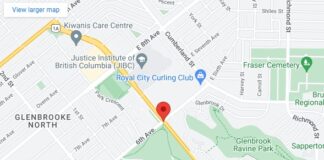BY DAVID COLETTO
HEADED into the weekend, Abacus Data completed a province-wide online survey of 800 eligible voters. The survey was completed on May 25 and 26, 2018. The margin of error for a probability-based survey of this size is + 3.5%, 19 times out of 20.
Here are the 5 key findings:
#1: THE NDP HAS TAKEN A 4-POINT LEAD OVER THE TORIES.
Since our last survey, NDP support among decided voters has increased marginally by 3 points while the PCs are down 2, and the Liberals down 1. The NDP now leads for the first time in our tracking, ahead of the Tories by 4 points.

Demographically, the NDP’s province-wide lead is built on strong support among those aged 30 and under while the Tories are stronger with those aged 60 and over. The NDP has made some gains with those aged 45 to 59.

#2: THE ACCESSIBLE POOL OF VOTERS AVAILABLE TO THE NDP CONTINUES TO GROW AND IS 17 POINTS LARGER THAN THE POOL FOR THE TORIES.
Throughout the campaign, the NDP has had the largest pool of accessible voters (those willing to at least consider voting NDP). In our latest survey, that pool has grown again to 69%. But more importantly, the number of people who are certain to vote NDP has also grown matching the number who feel the same way about the PCs. This suggests that voter intent is firming up and both the NDP and the PCs can count on a sizeable group of core supporters.
Despite seeing its accessible voter pool shrink over the campaign (from 59% in early April to 52% today), the PCs still have potential to grow between now and Election Day. While half of the electorate is a write-off for the Tories, there’s still an opportunity for the PCs to convert more voters in the final days of the campaign, especially if Ms. Horwath stumbles in the debate or attacks on some her candidates are effective.

#3: 84% OF ONTARIANS WANT CHANGE. THE DESIRE FOR CHANGE HAS NOT DISSIPATED AT ALL OVER THE CAMPAIGN.
The one constant in this election has been the electorate’s overwhelming desire for change. It has been the primary hurdle for the incumbent Liberals as they seek a fifth mandate. The Liberals had to weaken the desire for change if they would have any chance to win.
Heading into the Leaders Debate, that hasn’t happened. More Ontarians today want change then did at the beginning of April and the intensity of that desire (64% definitely want change) has grown as well.

#4: DESPITE THE INCREASED SCRUTINY, ANDREA HORWATH’S NEGATIVES ARE NOT RISING.
With increased support comes increased scrutiny for the NDP. Despite this attention, Ms. Horwath’s personal numbers have remained positive without any real increase in negatives.
Forty-four percent of Ontarians have a positive impression of the NDP leader (up 16 since early April) while only 15% have a negative view of her (unchanged since the start of the informal campaign period). In contrast Ms. Wynne’s numbers remain overly negative while Mr. Ford’s negative trend has halted after his negatives increased consistently across our previous three waves of research.

#5: MOST THINK THE NDP HAS MOMENTUM RIGHT NOW AND MORE THINK THEY WILL WIN THE ELECTION THAN DID LAST WEEK.
A part of the NDP’s rise, and its ability to draw support away from the Liberals is the perception that the party has momentum. Most people (52%) feel that NDP has the most momentum now.

Moreover, the number of people who think the NDP is going to win the provincial election has increased by 11 points in a week, from 15% to 26%. More still think the PCs will win but the expectations of an NDP win have grown considerably.

Finally, as a driver for strategic voting, negative feelings about the NDP winning the election have not increased over the past week. In fact, more people today would be delighted with an NDP win than last week (up 7 points to 33%).
Feelings about a PC win, on the other hand, are moving in the opposite direction. 45% would be dismayed with a PC win, up 4 points in a week. Only one in four Ontarians would be delighted with a PC win.
For the Liberals, the environment continues to be quite challenging. Only 15% of respondents would be delighted with a Liberal win while 52% (more than any other party) would be dismayed with a Liberal win.

CONCLUSIONS
The election, by all accounts, is too close to call. The NDP has momentum headed into the Leaders Debate tonight while the opinion environment remains incredibly difficult to imagine a Liberal comeback.
PC support has declined somewhat (thanks to more to undecideds moving to the NDP than a loss of its own support) but its support remains solid and concentrated among voters more likely to vote.
Voters sense the Andrea Horwath has momentum, more now think they have a chance to win than last week, and people continue to feel good about Horwath, despite the increased attention she’s received. Much is riding on her performance in the debate tonight as more people will be looking to see if she’s a premier in waiting.
More than anything, Horwath needs to reaffirm why people like her and convince more people that a PC government is scary. Right now, not enough people are “dismayed” with the idea of a Ford-PC government to force more strategic voting and pull voters away from the Liberals.
Doug Ford needs to keep the focus on the “mess” he promises to clean up, demonstrate he’s level-headed and ready to lead and respond to the expected attacks on the alleged inappropriate behaviour of PC candidates and the cost of his election promises.
Kathleen Wynne, freed from the constraints of being second in the polls, can take some risks as she is the leader with the least to lose to tonight.













